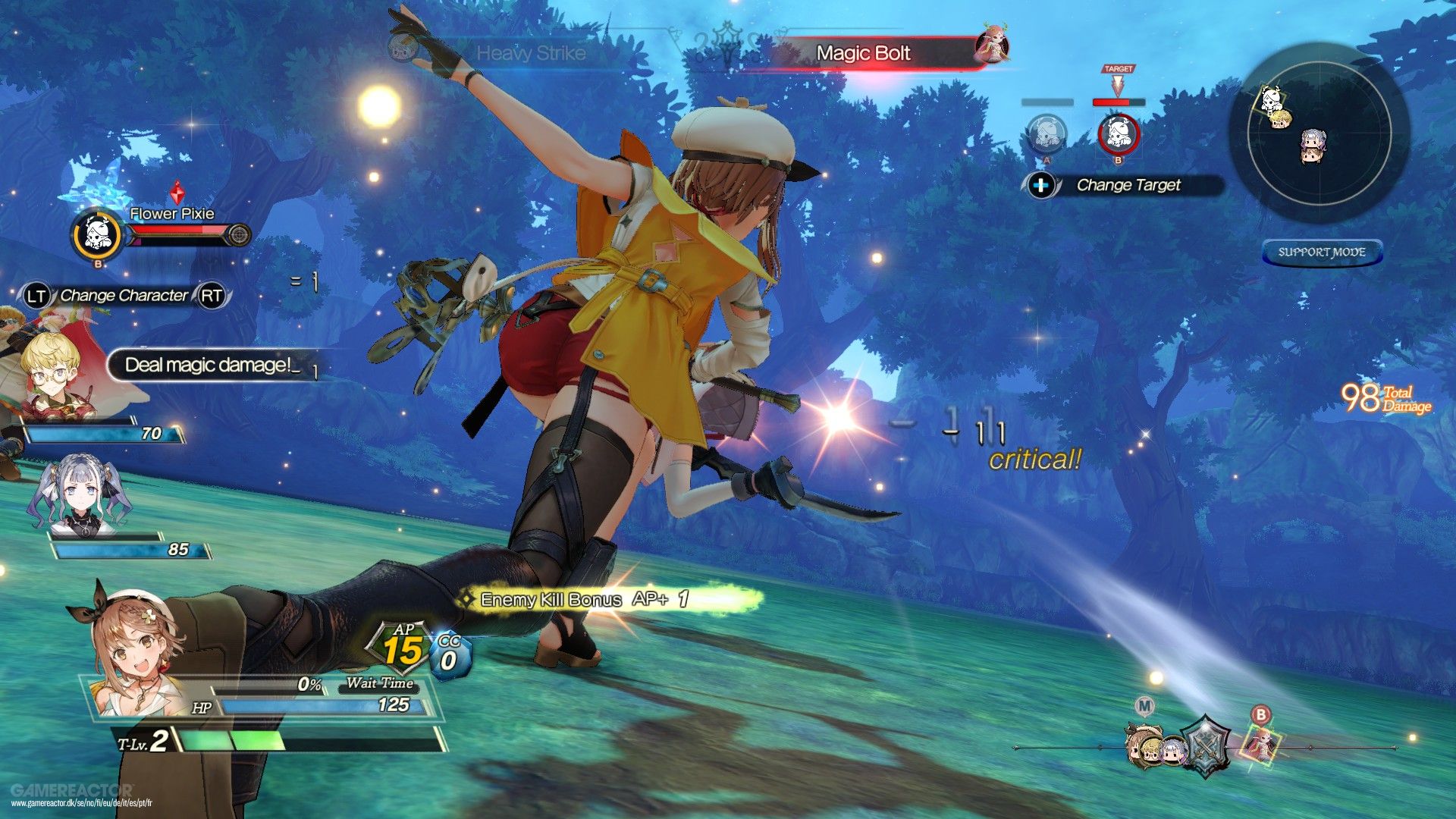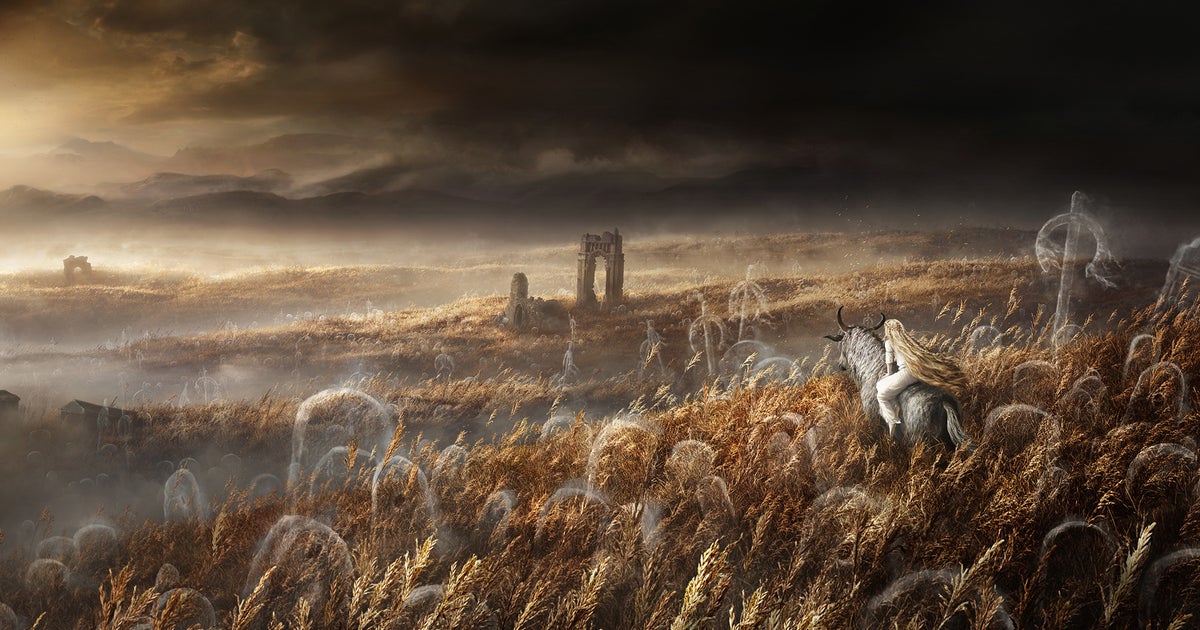He used the Gust batteries to keep Atelier Ryza 2: Lost Legends and the Secret Fairy ready with such a short time difference compared to Atelier Ryza: Ever Darkness and the secret hiding place. One of the ways this, and one of the reasons for this continuity, is that for the first time in the series’ history, a female protagonist repeats the role. What will Reisalin “Ryza” stout have that she liked so much?
In the fictional world, between three and three years more time has passed than in the real one (one and a half). Ryza is instigated by her friend Tao, whom we were able to control in the previous one, and goes to the royal capital Ashra-am Baird to set up a studio there that will be the base of operations for her plans. Especially for exploring ancient ruins while investigating the truth about lost legends.
She was the only one of her group who stayed on the island after the last adventure, but this new trip will allow her to meet up with Empel, Lila, Klaudia, Lent and Tao again even though only the last three are controllable . The supporting characters that go for those who step in as there are four more novelties in the roster that fit very well and naturally with those already present: the fairy Fii, Patricia, Clifford and Serri.
As always, the basic game mechanics are alchemy. You spend most of your time collecting and synthesizing materials, either to create tools like tools, weapons, or consumables at the same time, or to obtain compounds that later become part of the synthesis with other objects and improve their properties.
Here the synthesis process is called Sinkage Synthesis, but it is similar to the previous one. There are some diagrams of materials with cells that you need to fill in with the appropriate types and it is very easy to do. There is a basic material that can be sand, for example, and bonuses are earned when there are also materials with the right element: fire, wind, ice and lightning. One of the novelties of Atelier Ryza 2 is the “Essence” feature, which opens the door to change the elementary conditions of an object during the synthesis so that the end result is not always the same.
Gust has decided to redo the previously released gameplay system and that could be the key to success, although it will require improvements: a combination of real-time and twists in combat. From the team of three characters, you only take over the reins, but you can jump to the others during the fight. Performing basic movements collects action points (AC) for the team, which are then used up when using skills. In this process, individualized CC points (Core Charge) are generated, which are issued for the use of objects.
Another difference from traditional JRPGs is that consumables are less of a consumable item as they last forever as if they were actually spells once synthesized. You have to use them very strategically, especially with the Quick Item and Item Rush forms, because the first allows you to sneak around the round to change the course of a fight or avoid a critical moment, and the second allows you to Combo very well assemble interesting. If you learn to master these concepts and use them wisely, you will do very well, but since you create them yourself, a lot more weight will be placed on the other part of the game.
What they didn’t complicate is creating a very complex plot, although, like the first, there are some pretty dark twists towards the end that liven things up. The narrative pace is slow, as is the exploration of this group of friends.
They placed many video scenes of the capital between segments of the story. They are those fragments of life that fans of the Atelier series like so much and that serve to let the characters show their personalities and get to know the rest of the cast a little. There are so many that there is even a phase of the game where you can’t walk around town without missing one. You have to get to the point on its quality.
The approach to creating the scenarios that you find while exploring the ruins is weird. Find Remnants of Remnants, Ruin Fragments and Ruin Crystals as requested by the Exploration Journal to get the experience points Ryza needs to expand her skill tree and learn more about the lost legends. However, the execution of these dungeons is the worst of the entire game, as their darkness and monotony contrast with the joy of the external environment and the process of completing the diary over and over again repeats itself.
It’s nice to get out of these caves to enjoy the beauty of the world of Atelier Ryza 2: Lost Legends & the Secret Fairy. When the protagonist learned to do new things, like swimming, climbing, hanging on a hook or riding a monster, the designers dropped their hair and added variety to the surroundings. They were particularly good places like the Windmill Valley, the Clear Farming District or the Star Guardian Lake at night and at dusk.
This studio with limited resources was able to make the most of their use of color because in reality the textures are pretty poor and the modeling and animation of the characters are excellent. There is also an excess of bloom in some parts of the world, but at least it can be disabled in the PC version.
With this warm visual style comes a soundtrack that fits perfectly. The game is fully aware that this is a light-hearted fantasy adventure and makes the most of it, an eccentric touch that also appears in combat compositions against both a boss and common enemies. There are also the melodies that determine the life of the series, that is, those of the cinema videos.
Overall, Atelier Ryza 2: Lost Legends & the Secret Fairy is a very recommendable JRPG. It doesn’t suggest anything risky, but it’s a clear development in relation to a first installment which is still very young and it serves to keep the level of this series, which is growing significantly, high.
function FastRegisterResponse(){ $.ajax({ type: "POST", url: "/ajaxstuff/fastRegister.php",
}) .done(function (code) { $('#re_loginbox').replaceWith(code); // console.log(code); $('.loginWrapper').show(); }) .fail(function(jqXHR, msg) { console.log("request fail"); $(selectorForLoginMessage).text(msg).show(); }); return false; }
function LoginWithFacebook(selectorForLoginMessage, fbUpdateUser) {
FB.login(function(response) { if (response.authResponse) { FB.api('/me', {fields: 'email,last_name,name,first_name'}, function(user) { var main = false; if (user && !user.error) { // console.log(user); if(selectorForLoginMessage == '#fbLoginMessageMain') main = true; $.ajax({ type: "POST", url: "/ajaxstuff/fblogin.php", data: {userobj: user, fbUpdateUser: fbUpdateUser, main: main} }) .done(function(code) { if(main){ console.log("Is logged"+code); if(code==0) { if(!$('.signin').hasClass('active-signin')) { $('.signin').addClass('active-signin'); if($('.login').hasClass('active-login')) { $('.login').removeClass('active-login'); var request = new GRAsync(); var path="/ajaxstuff/join.php?ajaxRequest"; request.setUrl(path) .setSelectors($('#joinContainer') ) .setData({register:true,facebookUser:user}) .setDataType('html') .setType('POST') .sendRequest();
} } } else { window.location="/";
} } else{ $('#re_loginbox').replaceWith(code); $('.loginWrapper').show(); //location.reload(true); } }) .fail(function(jqXHR, msg) { console.log("request fail"); $(selectorForLoginMessage).text(msg).show(); });
} }); } else { // console.log('User cancelled login or did not fully authorize.'); } }, {scope: 'email,publish_actions'}); // TODO: don't ask for publish_actions by default. It might scare away some users. Ask later, when they actually want it. return false; }
function AddSearchParamsAndReload(newParamStr) { var newParamArr = newParamStr.split("&"); if (window.location.search.length > 1) { // don't count the initial '?' var oldParams = window.location.search.substr(1).split("&"); var paramsToAdd = []; for (var j = 0; j < newParamArr.length; j++) { var found = false; for (var i = 0; i < oldParams.length; i++) if (newParamArr[j] == oldParams[i]) found = true; if (!found) paramsToAdd.push(newParamArr[j]); } if (!paramsToAdd.length) window.location.reload(); else window.location.search += '&'+paramsToAdd.join("&"); } else window.location.search="?"+newParamStr; } function datahrefclick_loader() { //var clickloader = document.getElementsByClassName("linkable"); //for (var i = 0; i < clickloader.length; i++) { //clickloader.item(i).addEventListener("click", datahref_redirect, false); //} var matchingElements = []; var clickloader = document.getElementsByTagName("*"); for (var i = 0; i < clickloader.length; i++) { if (clickloader[i].getAttribute('data-ohref') !== null) { clickloader.item(i).addEventListener("click", datahref_redirect, false); clickloader.item(i).style.cursor="pointer"; } } } function datahref_redirect() { // window.location.replace(this.getAttribute('data-href')); // Self window window.open(this.getAttribute('data-ohref'), this.getAttribute('data-scope')); // New window } document.addEventListener("DOMContentLoaded", datahrefclick_loader, false);














